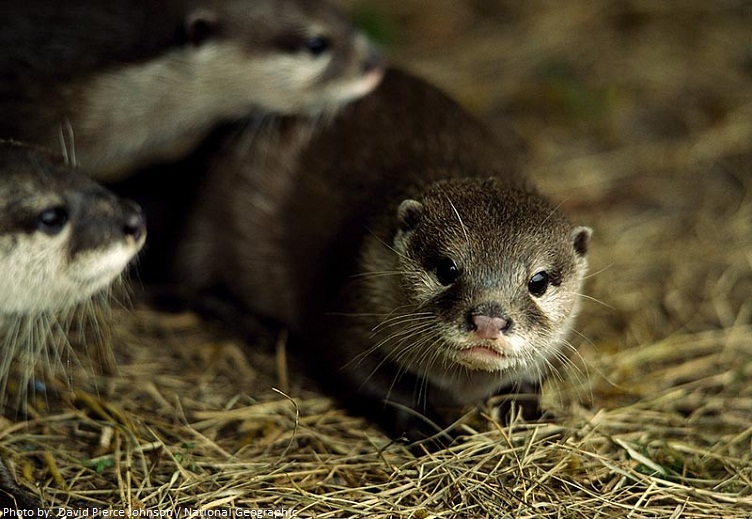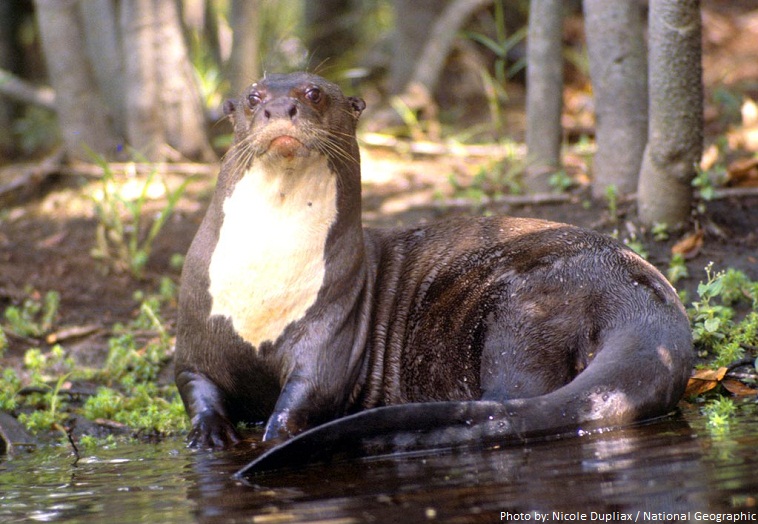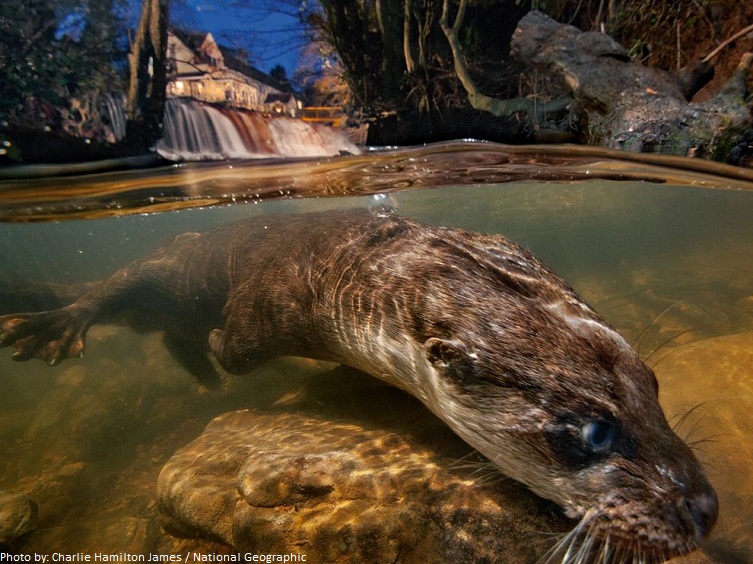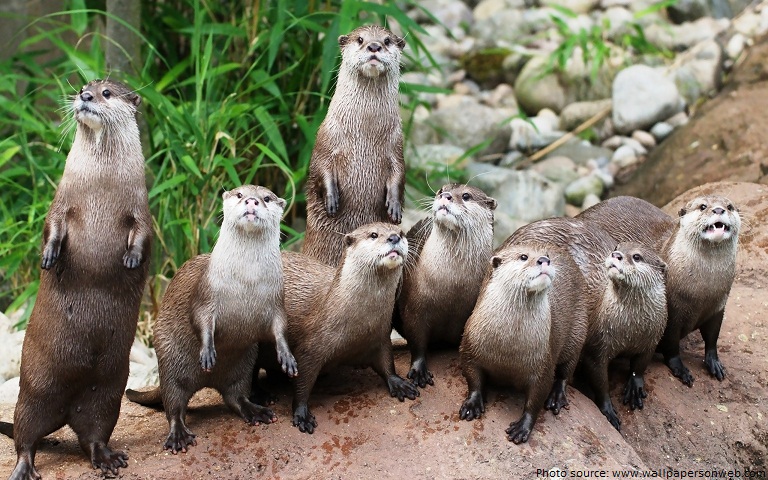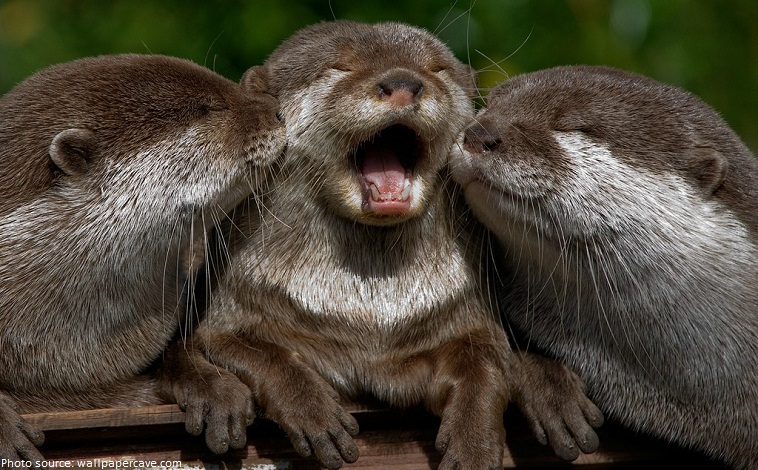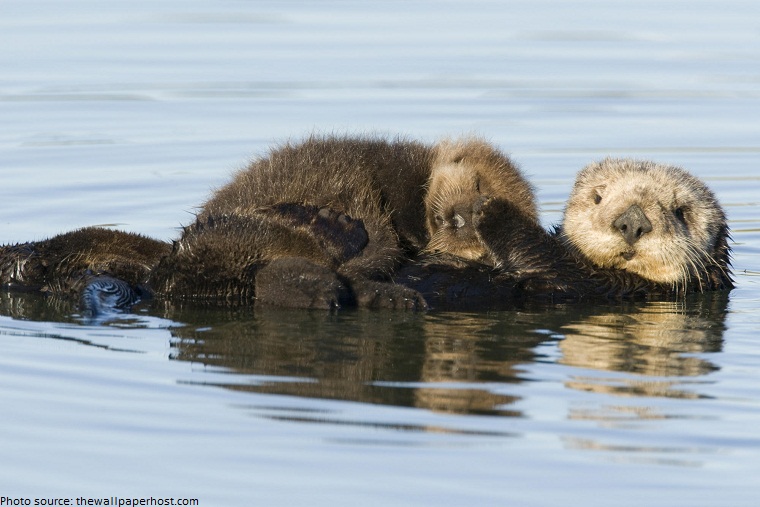Otter is a common name for a carnivorous mammal in the subfamily Lutrinae.
There are 13 species of otter found all around the world. Some of the best known are the giant otter, the sea otter, the European otter, the Northern river otter among others.
Otters are adorable creatures that live both on land and in the water.
Their sleek, streamlined bodies are perfect for diving and swimming. Otters also have long, slightly flattened tails that move sideways to propel them through the water while their back feet act like rudders to steer.
They like to swim on their back and sides and can see just as well underwater as they can above.
Sea otters are good at floating on the water’s surface, as air trapped in their fur makes them more buoyant.
Almost all otters have webbed feet, some more webbed than others, and they can close off their ears and nose as they swim underwater.
Average life span in the wild is up to 12 years except for sea otter who can live up to 20 years.
Otters are found on every single continent in the world except for Australia and Antarctica.
They enjoy the freshwater but they are also known to live in the saltwater of the oceans as well. Other places you will find them lingering include around rivers, streams, and lakes.
Otter species range in size the smallest Oriental (or Asian) small-clawed otter at 0.6 m (2 ft) and 1 kg (2.2 lb).
The largest is Giant otter who can reach 1.8 m (5.9 ft) and 45 kg (99.2 lb).
Otters are very energetic and playful.They are intelligent and curious, and they are usually busy hunting, investigating, or playing with something.
Otters like to throw and bounce things, wrestle, twirl, and chase their tail. They also play games of tag and chase each other, both in the water and on the ground.
Otters make lots of different sounds, from whistles, growls, and screams to barks, chirps, moans, and coos.
Otters can stay submerged for five to eight minutes, depending on the species, because their heart rate slows, and they use less oxygen.
Otters have a very high metabolism and have to eat a lot of food per day, or eat several times a day.
River otters eat mostly fish, frogs, crayfish, crabs, and mollusks, with an occasional small mammal or bird.
Sea otters eat many of the same things, but mostly sea urchins, abalone, crabs, fish, octopuses, mussels, and clams. They crack open clams and mussels with rocks they hold on their stomach—the only otter species to use rocks as tools.
An otter’s den is called a holt or a couch.
A group of otters are called a bevy, family, lodge, or romp, or, when in water the group is called a raft.
For most otters, social groups are made up of a mother, her older offspring, and her newest pups; the males spend most of their time alone or with a few other males.
During breeding time or where there’s lots of food, though, larger otter groups may gather, especially among sea otters in kelp beds.
Otters reach sexual maturity between 2 to 5 years.
Gestation period is 2 months for some species to 6 months for sea otters.
The female otter will usually have between 1 and 6 pups depending on the species.
For most otters (not the sea otter) the pups are born in a den with their eyes closed and they are helpless. The mother takes care of the pups and they open their eyes and start exploring after about one month, at roughly two months they start swimming, and they stay with their mother and brothers and sisters until they are about 1 year old.
Sea otter pups are born with their eyes open, and even though they are not able to swim they have a coat of hair that lets them float. Their mother carries them on her stomach for the first two months until they are ready to start swimming and diving on their own.
For many generations, fishermen in southern Bangladesh have bred smooth-coated otters and used them to chase fish into their nets.
Many species of otter are either threatened or endangered.
Beaver habitat is a great place to find otters, because the otters benefit from the dams and dens beavers build.
Otters are a popular animal in Japanese folklore where they are called “kawauso“. In these tales the smart kawauso often fool humans, kind of like a fox.
In China and Japan, there are stories where otters would shapeshift into beautiful women in old books like In Search of the Supernatural and the Zhenyizhi.


